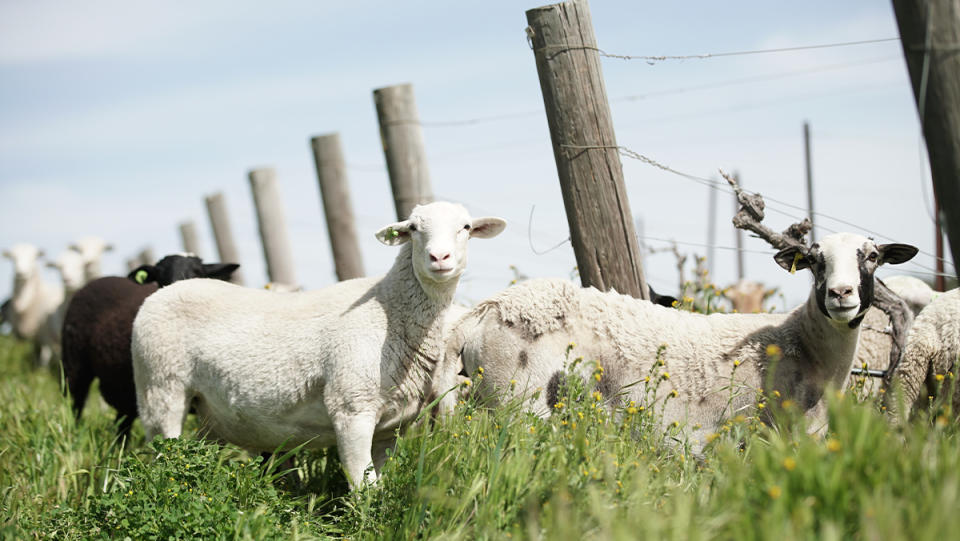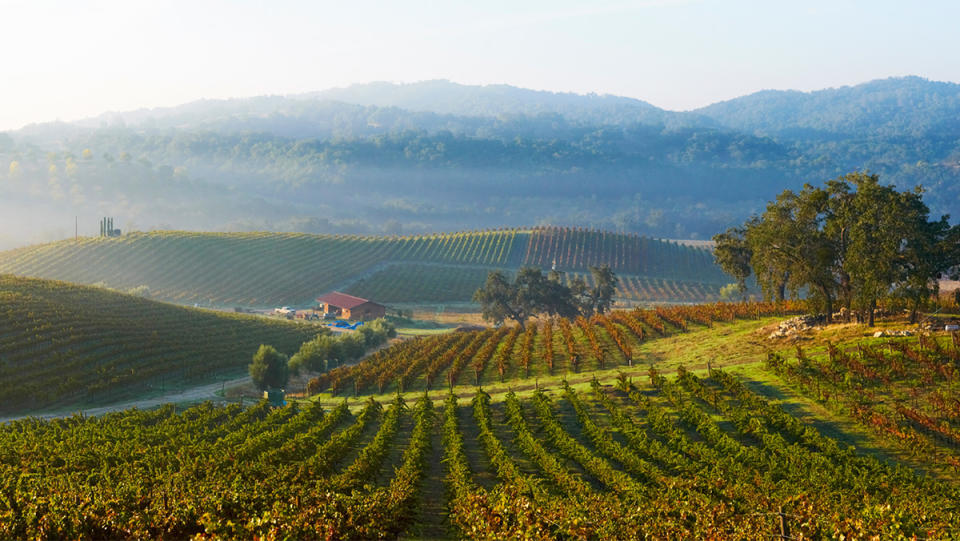How Winemakers Are Reducing Carbon Emissions While Improving Flavor

This story is from an installment of The Oeno Files, our weekly insider newsletter to the world of fine wine. Sign up here.
We are not the first people to have written the words “Great wine begins in the vineyard,” but in many years of visiting wine regions and tasting wine we can certainly attest to the truthfulness of this statement. As much of the wine world comes down off its 20th-century fascination with pesticides, herbicides, and fertilizer and moves back toward a type of farming that’s better for the planet, vines, grapes, and our health, it’s important to consider the impact that cleaner farming can have on the wine itself.
More from Robb Report
'Crazy Rich Asians' Alum Henry Golding Is Joining 'Nine Perfect Strangers' Season 2
Winnie Harlow Seeks $3.7 Million for Modern Farmhouse-Style L.A. Estate
Hermès Is Being Sued by Two Shoppers Who Couldn't Buy a Birkin Bag
With that in mind, Jason Haas led Tablas Creek Vineyard in Paso Robles, California, to attain the world’s first Regenerative Organic Certified (ROC) certification for a winery in August 2020. The second-generation partner and general manager of Tablas Creek, Haas wrote in a 2022 blog post about his decision, “I can attest to its ability to produce healthier soils, more resilient grapevines, and yes, better-tasting wines.” Farmed organically since its founding in 1989, Tablas Creek had already achieved both organic and Biodynamic certification; Haas and his team decided to move forward with the third approval process in 2019 because, as he tells Robb Report, “it’s wide-reaching and rigorous, science-based, and focused on the real challenges the modern world is facing.”
Better-tasting wine is just one of the benefits of this style of agriculture that aims to increase global soil health and reduce carbon emissions by eliminating the use of synthetic fertilizers and pesticides, utilizing diverse cover crops (in vineyards, the plants that grow between and beneath rows of grapevines,) allowing livestock to graze on cover crops, minimizing tilling and soil disturbance, and adding compost to fields and surrounding areas. Certification also involves, as Haas points out, “how you use your resources, how you treat working animals on your farm, and how you train and pay your farmworkers.”

Tablas Creek is not alone among area wineries pitching in to improve their wine while helping their planet. Midway between San Francisco and Los Angeles in San Luis Obispo County, Paso Robles—which also contains 11 sub-AVAs—is home to 40,000 acres of grapevines and more than 200 wineries, many of which have achieved certifications attesting to their commitment to ecology, including Sustainability in Practice (SIP), California Sustainable Winegrowing Alliance, Demeter Biodynamic, and USDA Organic. Regenerative Organic Certified sits at the top of the pyramid because farms (of any type, not just wine grapes) must first be certified organic to achieve the designation. Haas states that this “sets the bar high” because it can’t just be used for greenwashing, the practice of making vague or insubstantial claims of sustainability that can’t be verified.
Two of Tablas Creek’s neighbors, Booker and Villa Creek, have also achieved Regenerative Organic certification, while a third, Robert Hall Winery, has completed the three-year conversion process and expects to receive certification this spring. One of the primary aims of regenerative agriculture is carbon sequestration, or keeping carbon in the soil rather than releasing it into the atmosphere. Hilary Graves, Booker’s vineyard and grower relations manager, confirms to Robb Report that this was one of winery owner Eric Jensen’s goals when seeking ROC as well as California Certified Organic Farmers’ (CCOF) seal of approval. “Farmers have a lot of power to efficiently cycle carbon with healthy soil,” Graves says. “We have the opportunity to use plants to gather solar energy and turn it into something of value.” She adds that the benefits go beyond environmental concerns, pointing out that in addition to improved soil health and stronger and more resilient grapevines, she sees “that the wines have a more precise sense of place over time. I believe that this signifies a quality difference as the wines reflect the place they came from more and more as time goes on.”

At Villa Creek, which is certified ROC, CCOF organic, and Demeter Biodynamic, co-owner JoAnn Cherry believes it is terribly important to support the organic movement. “Certifying agencies educate consumers and producers alike about all the benefits to the planet and human health,” she says. Cherry expects to see increased demand for wine made with organically farmed grapes.“Wine consumers are paying more attention to how the grapes are farmed and wines are made,” she says. “Having that ROC seal on the bottles boosts consumer confidence in the brand.” Because Villa Creek’s MAHA vineyard has always been farmed organically, Cherry can’t attest to a recent improvement in quality, but she emphasizes the benefits. “Our vines are strong and healthy and have deep root systems that can withstand drought,” she says. “I like to think they are digging deeper, through layers of different soil types and that brings layers of flavor to the wines.”
Robert Hall Winery has performed three years of side-by-side trials comparing its regeneratively farmed vineyard wines versus those from control vineyards. “It is still very early days, but we are very encouraged by the quality of fruit and resulting wines,” says Caine Thompson, managing director at Robert Hall. He believes that with regenerative farming, “you most certainly improve the transparency, flavor, and quality of the wine.” While Paso Robles has been touted for many years as the home of wines that are excellent values compared to regions farther north, Tablas Creek and its comrades in farming are known for their high-end offerings, especially their Rhône-style wines that have helped to define the AVA’s reputation. All of these are made in a style that is built to age, and there is ample reason to believe that regenerative farming will aid in the wine’s longevity and cellar-worthiness as well. “In regard to ageability, we will have to wait and see,” Thompson says. “But I would assume that when a wine is in better balance and harmony with nature, that in turn it will age and develop more gracefully.”
Do you want access to rare and outstanding reds from Napa Valley? Join the Robb Report 672 Wine Club today.
Best of Robb Report
Why a Heritage Turkey Is the Best Thanksgiving Bird—and How to Get One
The 10 Best Wines to Pair With Steak, From Cabernet to Malbec
Sign up for Robb Report's Newsletter. For the latest news, follow us on Facebook, Twitter, and Instagram.

 Yahoo Movies
Yahoo Movies 
